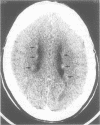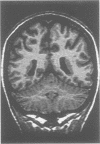Abstract
Subependymal heterotopia has recently been recognised as a cause of epilepsy, but the clinical and investigational features have not been fully described. The clinical, psychometric, imaging, and electroencephalographic features of 13 adult patients with subependymal heterotopia and epilepsy have been reviewed. Age at seizure onset ranged from 18 months to 20 years (median 13 years). There were significantly more female (12) than male (1) patients (p < 0.01). Diagnosis of subependymal heterotopia was made by MRI in 11 patients and CT in two. The heterotopic grey matter was nodular in 11 patients and diffuse in two; bilateral in eight and unilateral in five. There were significantly more patients with predominant right than left cerebral hemisphere involvement (p < 0.01). The most commonly involved site was the occipital horn of the lateral ventricles (10 of 13 patients). Eleven patients presented with partial epilepsy, 10 of whom also had secondarily generalised seizures. The clinical description of the seizures often suggested either an occipital (four patients) or temporal (five patients) onset. Two patients presented with absence attacks without clear focal features. Patients demonstrated normal early milestones (12 of 13 patients), including normal motor development (all patients) and average or above average intelligence (10 of 13 patients). An EEG examination showed normal background activity in all but two patients, one of whom had large intracranial haematomas. Epileptiform activity was usually widespread (10 of 13 patients) and in three patients, there was generalised 3-Hz spike and wave activity that had previously led to an erroneous diagnosis of concomitant primary generalised epilepsy. Onset of epilepsy in the second decade of life, normal developmental milestones and intelligence, and the finding of an overwhelming female preponderance differentiates subependymal heterotopia from other cortical dysgeneses. The female preponderance supports the importance of the X chromosome and sex steroids in the maturation and development of the cerebral cortex.
Full text
PDF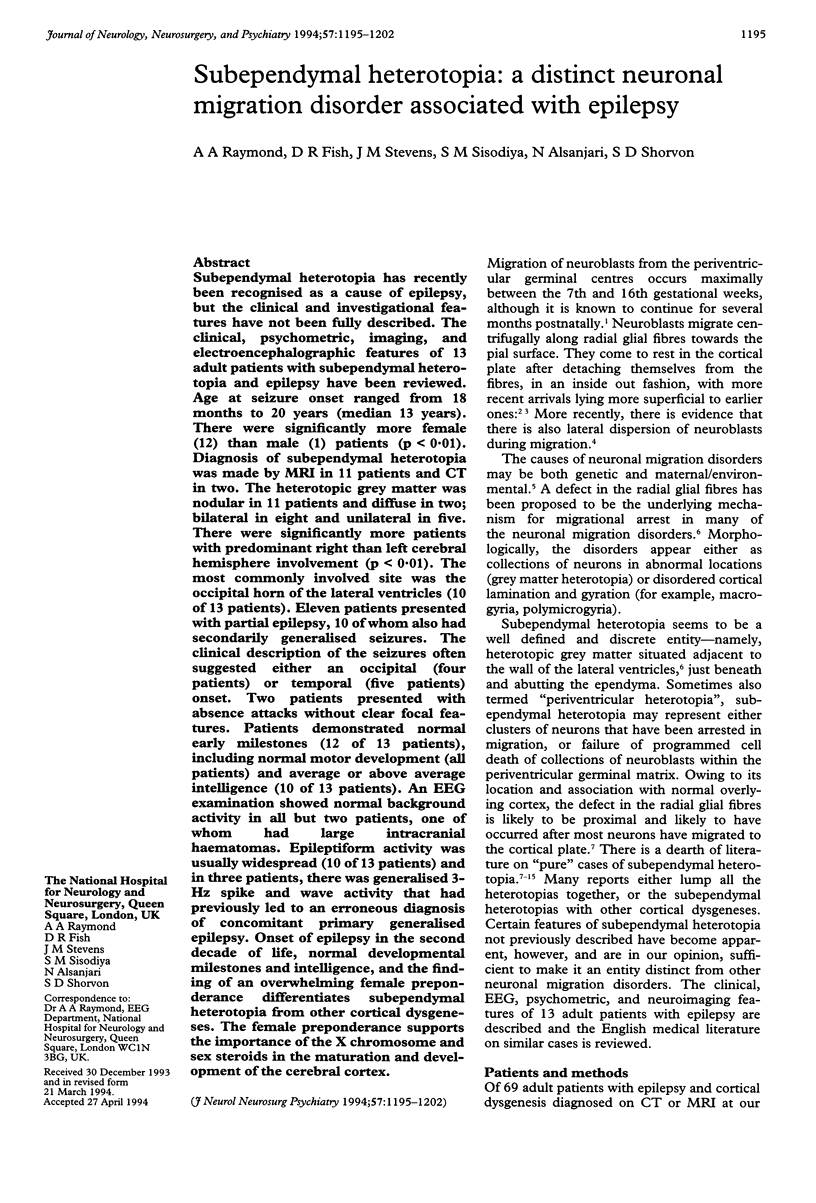
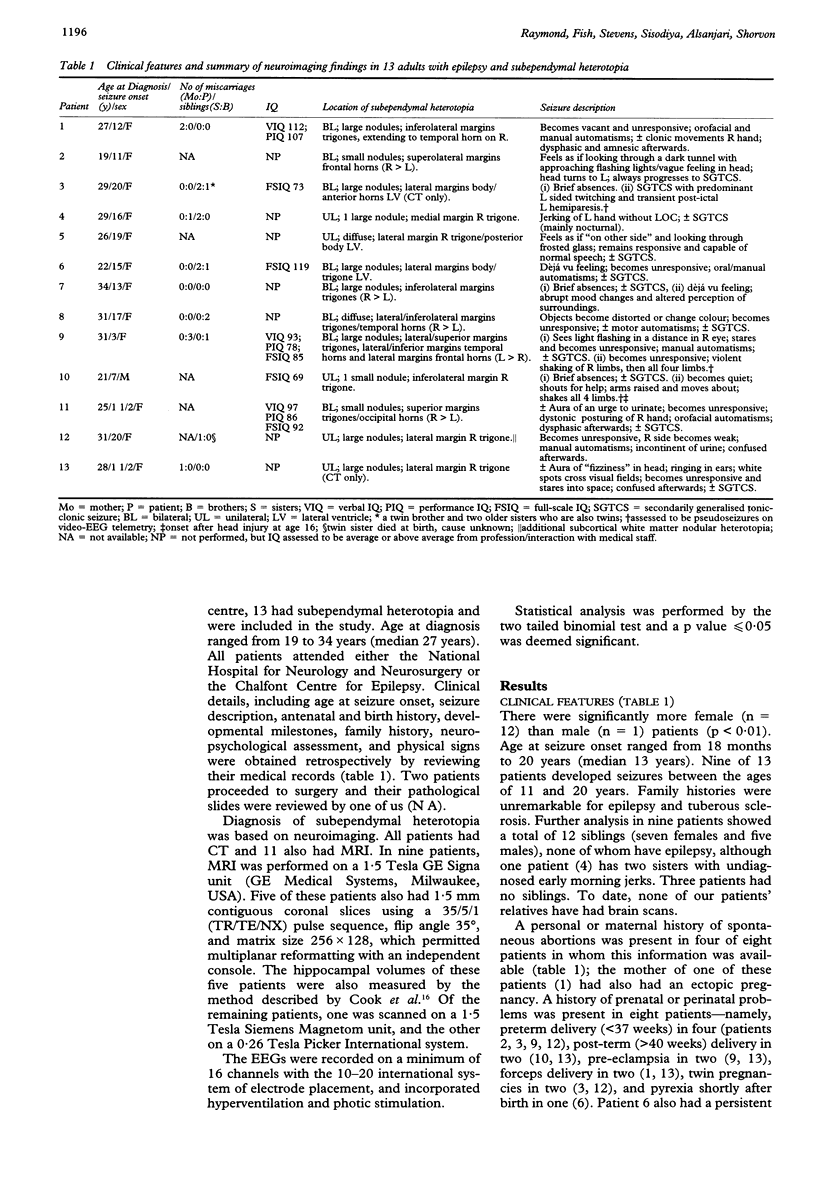
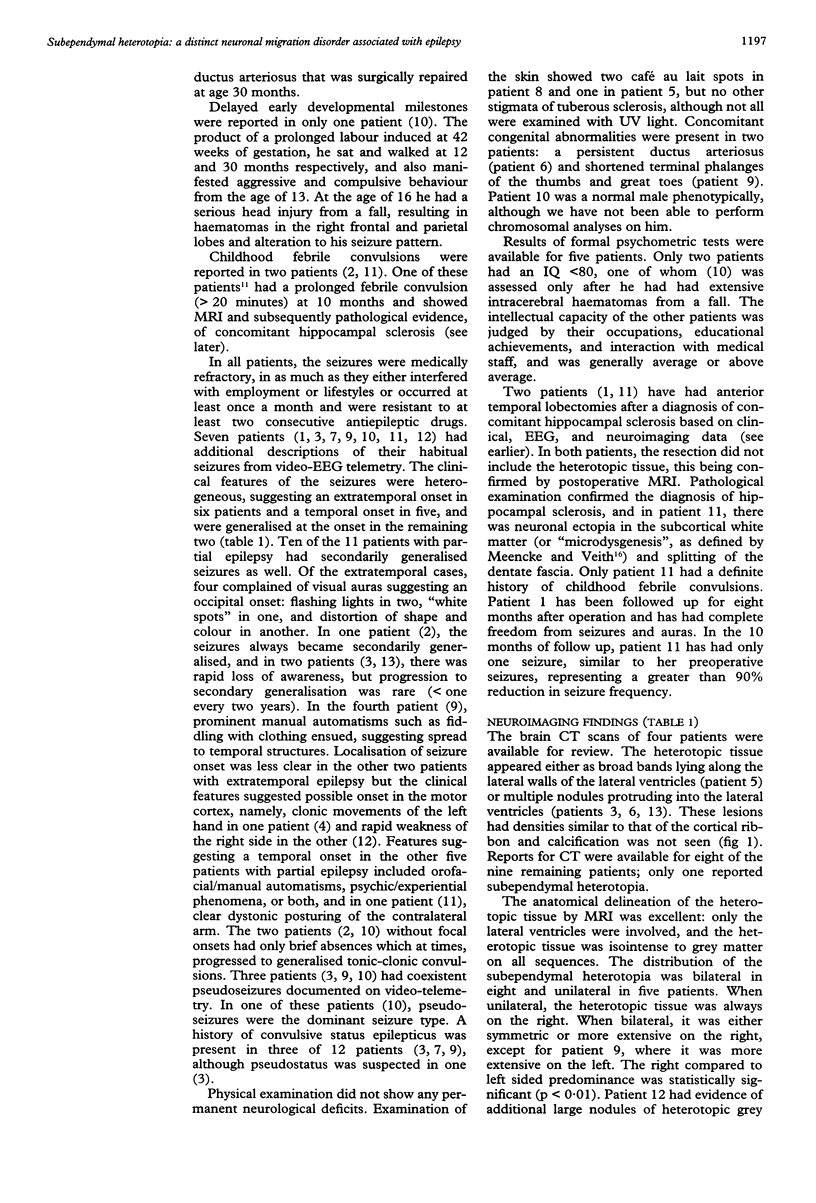
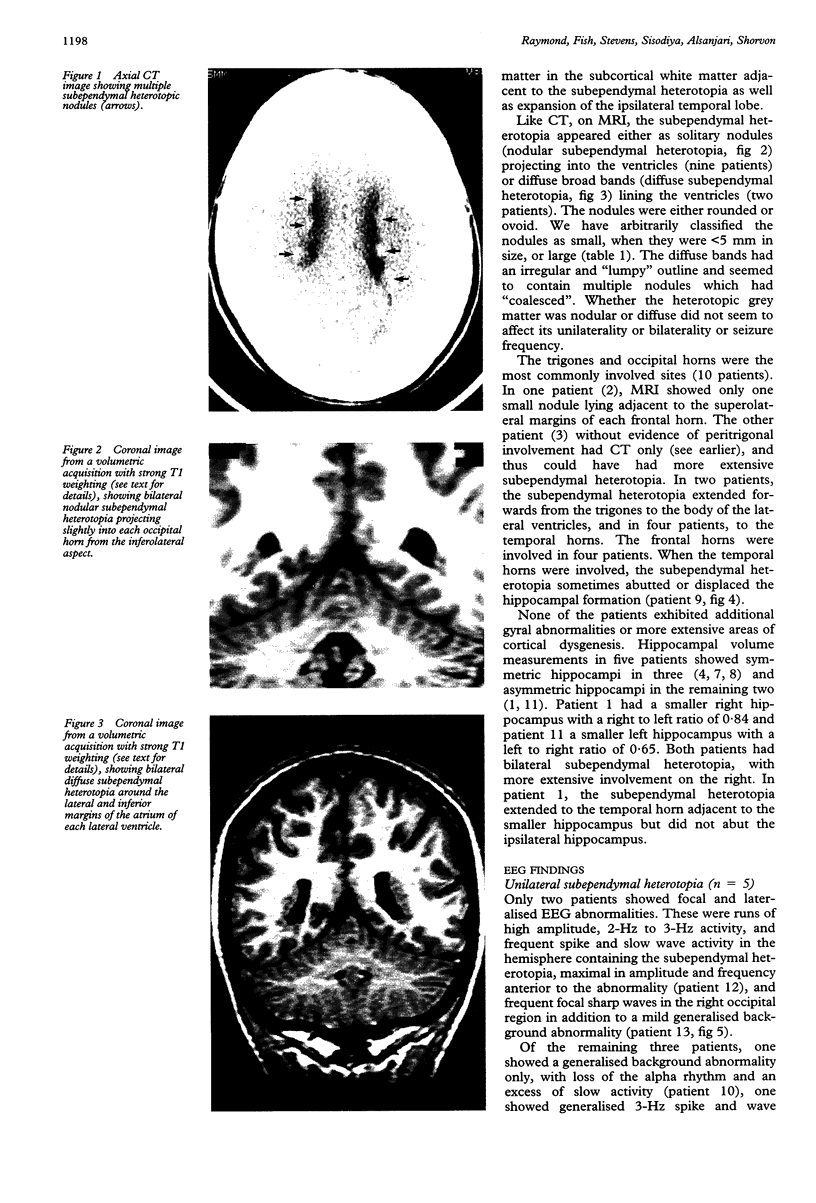
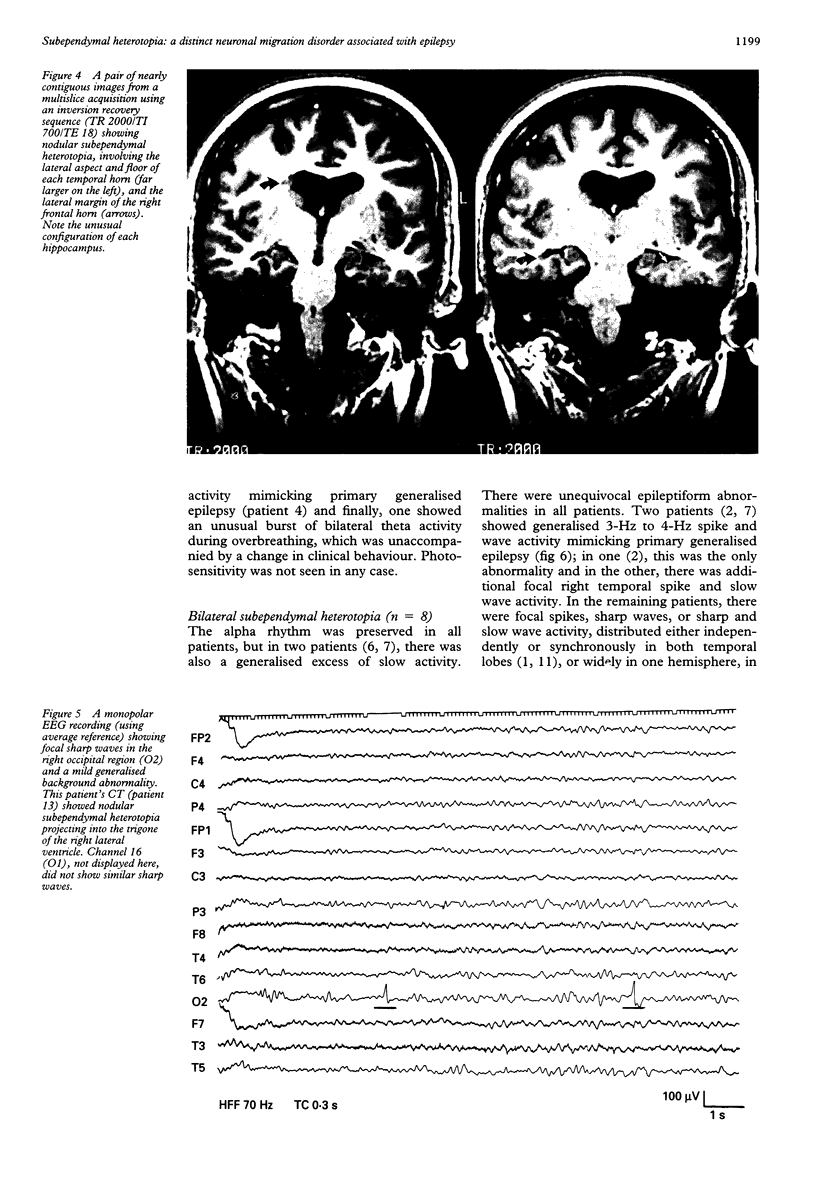
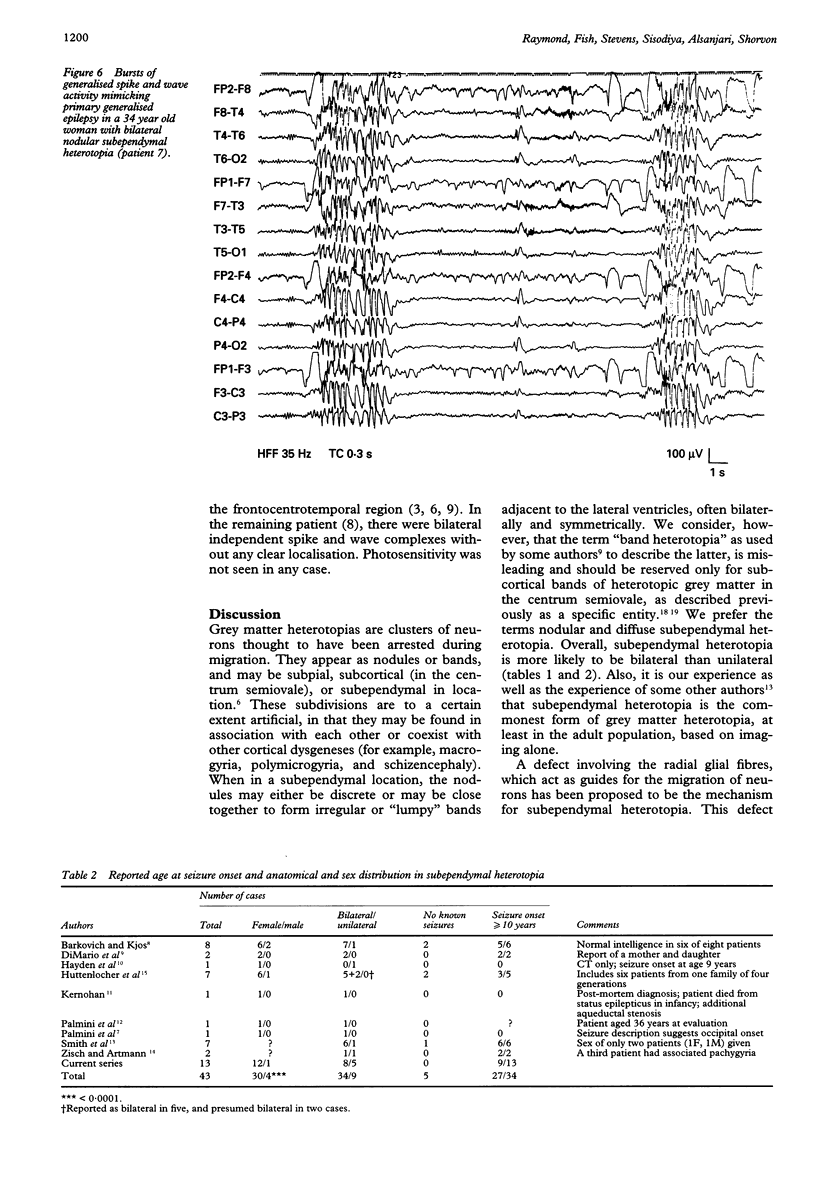
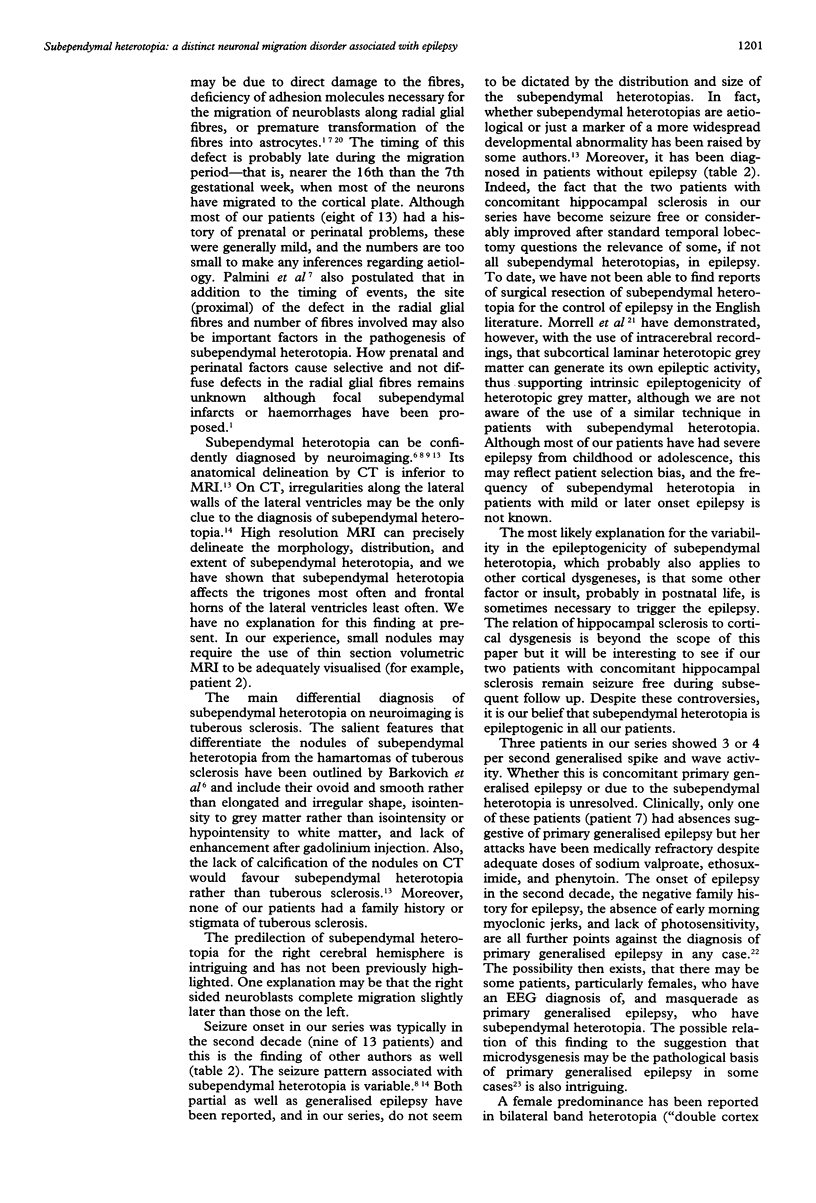
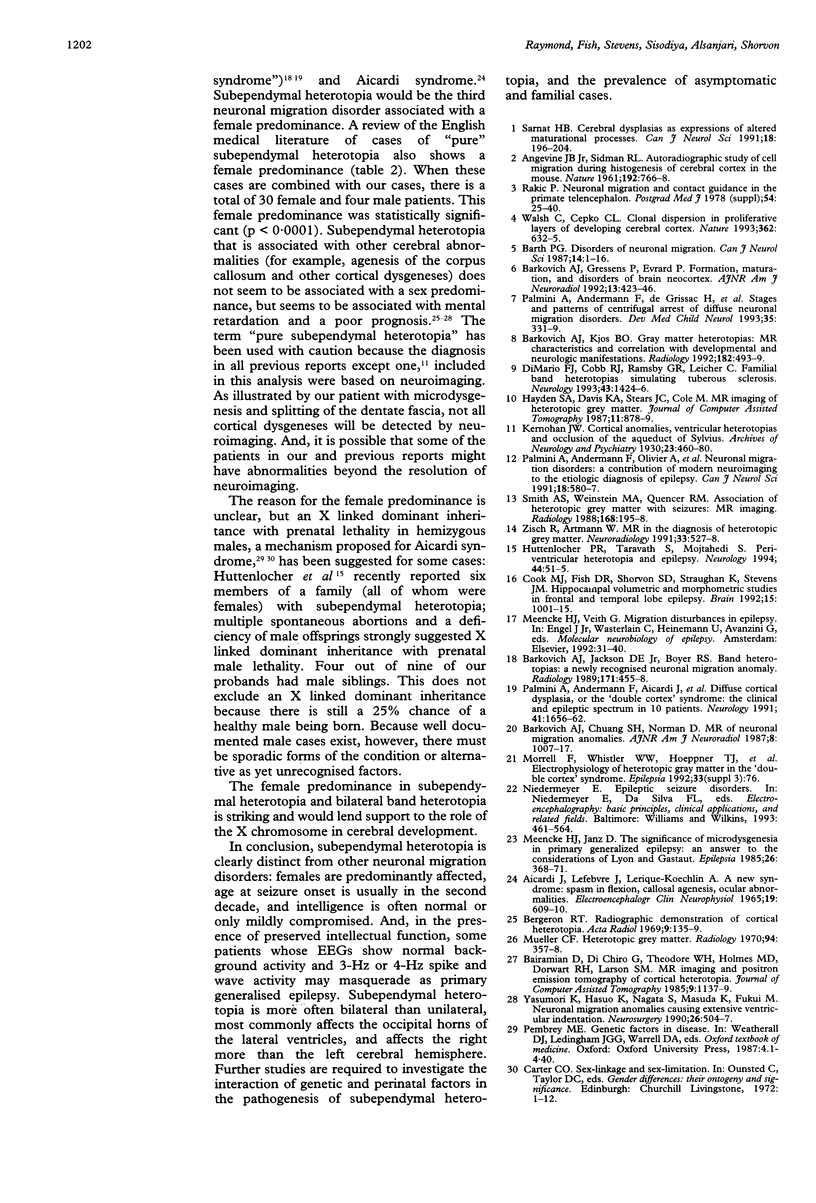
Images in this article
Selected References
These references are in PubMed. This may not be the complete list of references from this article.
- Angevine J. B., Jr, Sidman R. L. Autoradiographic study of cell migration during histogenesis of cerebral cortex in the mouse. Nature. 1961 Nov 25;192:766–768. doi: 10.1038/192766b0. [DOI] [PubMed] [Google Scholar]
- Bairamian D., Di Chiro G., Theodore W. H., Holmes M. D., Dorwart R. H., Larson S. M. MR imaging and positron emission tomography of cortical heterotopia. J Comput Assist Tomogr. 1985 Nov-Dec;9(6):1137–1139. doi: 10.1097/00004728-198511000-00031. [DOI] [PubMed] [Google Scholar]
- Barkovich A. J., Gressens P., Evrard P. Formation, maturation, and disorders of brain neocortex. AJNR Am J Neuroradiol. 1992 Mar-Apr;13(2):423–446. [PMC free article] [PubMed] [Google Scholar]
- Barkovich A. J., Jackson D. E., Jr, Boyer R. S. Band heterotopias: a newly recognized neuronal migration anomaly. Radiology. 1989 May;171(2):455–458. doi: 10.1148/radiology.171.2.2468173. [DOI] [PubMed] [Google Scholar]
- Barkovich A. J., Kjos B. O. Gray matter heterotopias: MR characteristics and correlation with developmental and neurologic manifestations. Radiology. 1992 Feb;182(2):493–499. doi: 10.1148/radiology.182.2.1732969. [DOI] [PubMed] [Google Scholar]
- Barth P. G. Disorders of neuronal migration. Can J Neurol Sci. 1987 Feb;14(1):1–16. doi: 10.1017/s031716710002610x. [DOI] [PubMed] [Google Scholar]
- Bergeron R. T. Radiographic demonstration of cortical heterotopia. Acta Radiol Diagn (Stockh) 1969;9:135–139. [PubMed] [Google Scholar]
- Cook M. J., Fish D. R., Shorvon S. D., Straughan K., Stevens J. M. Hippocampal volumetric and morphometric studies in frontal and temporal lobe epilepsy. Brain. 1992 Aug;115(Pt 4):1001–1015. doi: 10.1093/brain/115.4.1001. [DOI] [PubMed] [Google Scholar]
- DiMario F. J., Jr, Cobb R. J., Ramsby G. R., Leicher C. Familial band heterotopias simulating tuberous sclerosis. Neurology. 1993 Jul;43(7):1424–1426. doi: 10.1212/wnl.43.7.1424. [DOI] [PubMed] [Google Scholar]
- Hayden S. A., Davis K. A., Stears J. C., Cole M. MR imaging of heterotopic gray matter. J Comput Assist Tomogr. 1987 Sep-Oct;11(5):878–879. doi: 10.1097/00004728-198709000-00026. [DOI] [PubMed] [Google Scholar]
- Huttenlocher P. R., Taravath S., Mojtahedi S. Periventricular heterotopia and epilepsy. Neurology. 1994 Jan;44(1):51–55. doi: 10.1212/wnl.44.1.51. [DOI] [PubMed] [Google Scholar]
- Meencke H. J., Janz D. The significance of microdysgenesia in primary generalized epilepsy: an answer to the considerations of Lyon and Gastaut. Epilepsia. 1985 Jul-Aug;26(4):368–371. doi: 10.1111/j.1528-1157.1985.tb05665.x. [DOI] [PubMed] [Google Scholar]
- Mueller C. F. Heterotopic gray matter. Radiology. 1970 Feb;94(2):357–358. doi: 10.1148/94.2.357. [DOI] [PubMed] [Google Scholar]
- Palmini A., Andermann F., Aicardi J., Dulac O., Chaves F., Ponsot G., Pinard J. M., Goutières F., Livingston J., Tampieri D. Diffuse cortical dysplasia, or the 'double cortex' syndrome: the clinical and epileptic spectrum in 10 patients. Neurology. 1991 Oct;41(10):1656–1662. doi: 10.1212/wnl.41.10.1656. [DOI] [PubMed] [Google Scholar]
- Palmini A., Andermann F., Olivier A., Tampieri D., Robitaille Y., Melanson D., Ethier R. Neuronal migration disorders: a contribution of modern neuroimaging to the etiologic diagnosis of epilepsy. Can J Neurol Sci. 1991 Nov;18(4 Suppl):580–587. doi: 10.1017/s0317167100032753. [DOI] [PubMed] [Google Scholar]
- Palmini A., Andermann F., de Grissac H., Tampieri D., Robitaille Y., Langevin P., Desbiens R., Andermann E. Stages and patterns of centrifugal arrest of diffuse neuronal migration disorders. Dev Med Child Neurol. 1993 Apr;35(4):331–339. doi: 10.1111/j.1469-8749.1993.tb11645.x. [DOI] [PubMed] [Google Scholar]
- Rakic P. Neuronal migration and contact guidance in the primate telencephalon. Postgrad Med J. 1978;54 (Suppl 1):25–40. [PubMed] [Google Scholar]
- Sarnat H. B. Cerebral dysplasias as expressions of altered maturational processes. Can J Neurol Sci. 1991 May;18(2):196–204. doi: 10.1017/s0317167100031668. [DOI] [PubMed] [Google Scholar]
- Smith A. S., Weinstein M. A., Quencer R. M., Muroff L. R., Stonesifer K. J., Li F. C., Wener L., Soloman M. A., Cruse R. P., Rosenberg L. H. Association of heterotopic gray matter with seizures: MR imaging. Work in progress. Radiology. 1988 Jul;168(1):195–198. doi: 10.1148/radiology.168.1.3132731. [DOI] [PubMed] [Google Scholar]
- Walsh C., Cepko C. L. Clonal dispersion in proliferative layers of developing cerebral cortex. Nature. 1993 Apr 15;362(6421):632–635. doi: 10.1038/362632a0. [DOI] [PubMed] [Google Scholar]
- Yasumori K., Hasuo K., Nagata S., Masuda K., Fukui M. Neuronal migration anomalies causing extensive ventricular indentation. Neurosurgery. 1990 Mar;26(3):504–507. doi: 10.1097/00006123-199003000-00019. [DOI] [PubMed] [Google Scholar]
- Zisch R., Artmann W. MRI in the diagnosis of heterotopic gray matter. Report of three cases first discovered in adulthood. Neuroradiology. 1991;33(6):527–528. doi: 10.1007/BF00588047. [DOI] [PubMed] [Google Scholar]



